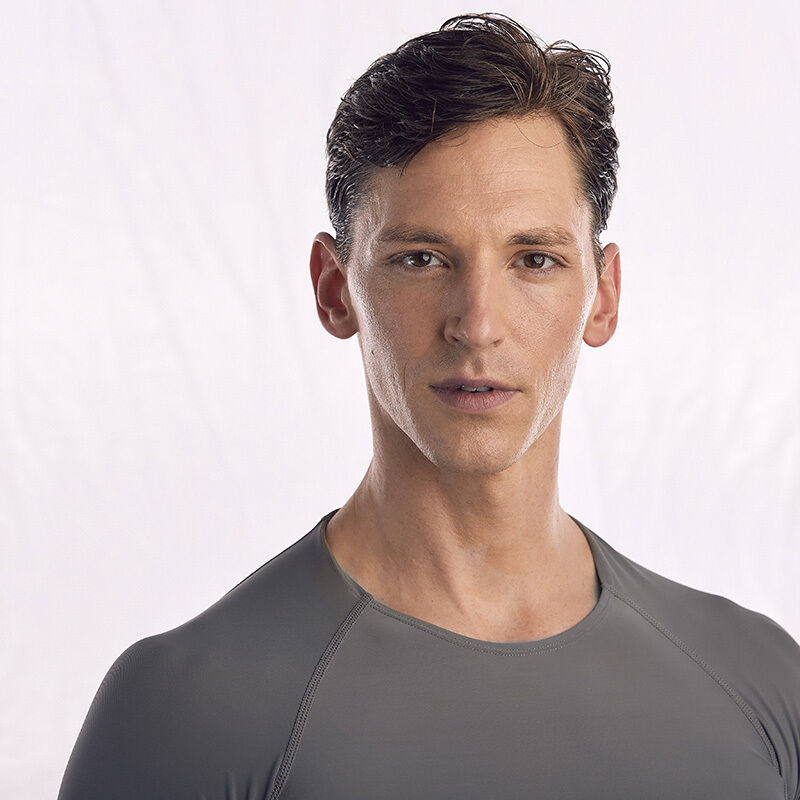Say It: Songs of Artful Resistance
Songs of Artful Resistance choreographer Jonathan David Dummar joined us for an exclusive Choreographer Q&A. We covered his creative collaborations, the digital landscape of making dance, and the healing art of creativity. Watch the debut of Songs of Artful Resistance on Thursday, February 11th at 7pm.
Our Choreographer Q&A with Jonathan David Dummar:
What is the premise around Songs of Artful Resistance?
The composer I collaborated with, Daniel Ward, titled a piece of his music Songs of Artful Resistance. It felt the most appropriate title to use as I choreographed my piece to that music. Within hearing the first couple of notes of the song, I knew I wanted to dance to it.
The title is also an acronym for S-O-A-R, a double-meaning I found really profound. It is a very relatable dance and truly speaks for itself. We always have things to resist. If you’re not fighting, it’s probably winning. It’s a good reminder. I view the artful resistance not like a barricade though, but rather receiving and reacting, yielding and driving that energy somewhere else.
I always had vague ideas of what the piece would look like but that really comes into play with the dancers in the room. You move to how the music moves you, then you try to work with that dancer to create something together. The process is truly equal parts them and you.
All along the way, it was so easy to return to the music. It suggests the choreography, allowing the piece to create itself. I firmly believe if you get yourself out of the way, it guides you along in the process.
Your intent when using the dancers in this piece was to highlight their strengths as individual artists. How did you implement this into the choreography?
You watch the choreography and you try and change it based on what looks best. You want to make them look their best and with this as the goal, it helps the process along. It’s collaborative and ever-evolving; this is what's changed about the digital environment. You can now take multiple cuts, though it is still hard. At the end of the day, we’re still people making art with all of our humanness and brokenness. I’ve learned to allow new things to emerge every day. If you try and repeat something exactly the same, you will fail every time. There has to be a humanistic understanding.
What was it like collaborating with U of M composer Daniel Ward and vocalist Donavon Hughes?
Working with Daniel is like a kinship; it feels like family. I see Daniel as a brother, something that resonated when we first met at church singing in the same choir. He is very talented and studied. He has a voice that sounds like it's from another time and sings with that true timelessness about him. His writing is a journal for him of sorts that has unfolded over a couple of years. With Songs of Artful Resistance, our resistance is an interesting topic. We continually have things fighting us so you have to have an element of both receiving and reacting or you get off-balanced.
I hope that the work provides some comfort and encouragement, especially as our country reckons with its gruesome, bitter past to change the culture of the present for the benefit of the future.
Donavon Hughes is a truly gifted vocalist. He really doesn’t need much coaching and simply feels the music in his way. Donavon was wonderful despite the singing conditions of our filming location. That comes across well in the performance too. I found it hard to balance both Donavon and the dancer’s footage because both aspects were so captivating. Due to the health precautions, we were only able to have all collaborators in the same room for one rehearsal, but hearing the music and dance happening at the same time was incredible.
Did you enjoy your role as choreographer rather than company dancer? Do you hope to pursue this in the future?
I loved the role of choreographer. It is so rewarding to be on the opposite side of the same coin. You’re dancing everyone's role and setting a standard. There is no point in doing something that looks or feels uncomfortable to the dancers.
It is a very rewarding feeling. The body, for example, never lies. Where you are emotionally, the body will express that and show up in your choreography. You then grab it and nurture it. The choreographer takes this and hands it off to the dancers, then all of the sudden, you’re an observer like everyone else. It’s truly enriching.
Why do you think now is such an important time for creativity?
For starters, the arts is where we heal. I'm so lucky that I have a job that allows me to do that. I’ve found that people drawn to artistic careers are some of the people that need it most.
We’re all artists; there’s an innate artist inside all of us. It is our job to be a vessel and create a good environment for that artistic talent that is special and fragile. We need to slow down, get more centered with the source of all true artistic expression, God or some prefer the universe.
I’d encourage the audience to continue collaborating even despite the conditions. Make art of high value, whether with your partner, family or friends. Make a project, simply do something creative. It will bring you much greater healing than you realize.
Note: "It took a number of people employed by Ballet Memphis to make Songs of Artful Resistance come together: Kristen Fisher, Bruce Bui, Sheric Hull, Julie Niekrasz. I felt rusty post-quarantine so with their help, we pulled it together."




